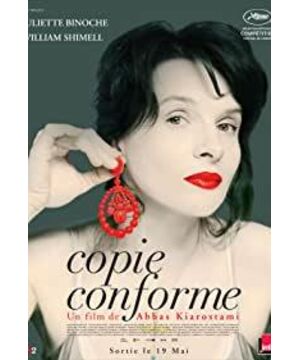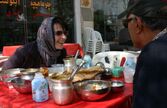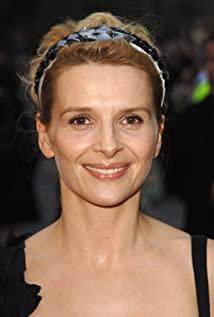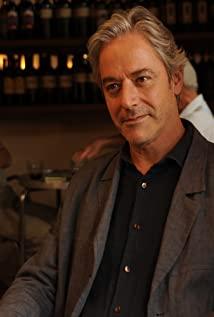As soon as I watched it, I pulled the progress bar to zero, and looked for a similar shot of the close-up of the desk lamp in the hotel corridor at the end of the film. I always felt that I had seen it somewhere before, but I couldn't find it, just like the marriage between the two protagonists. .
While watching, she sighed at this wonderful viewing experience. How could she be suspenseful one second, and then cry the next second. After chatting with James for a few words, she quarreled, and it was still a little funny...
That part of the restaurant should be the juncture of getting better and better and confusing. James said his book was inspired by a woman and her child he saw a few years ago: The mother turned around and looked at the child when she walked around the corner, why can't she walk with the child, but insist on their own pace...Bino Even the tears here are very moving. Afterwards she chatted with the Italian proprietress in the restaurant, they all wore crosses, one looked at James with suspicion, the other with admiration... What did they secretly say? The proprietress only said after that, this does not need to be known to men. I think what Abbas thinks may be that this does not need to be known to the audience...
Binoche grinning with make-up and lipstick is so funny, earrings off and on, and James about the difference between being half-asleep and asleep (which can be noisy too...) and the debate about the value of sculpture is so hilarious... When it comes to the rift in the marriage relationship, in fact, Abbas can handle it more hysterically and tornado at eight o'clock, but the light-lifting technique subtly highlights her agility and vitality. As the lady boss said, don't worry about idealized things. So the one second she was indignant, the next second she saw the Italian newlyweds who invited to take a photo waving from the window, she burst into tears and laughed.
The background of Britain, France and Italy and what James said about my family live their own life and I live mine, could not help but relate to the subsequent Brexit. The face of JJJJames facing the camera at the end really makes it hard to tell whether he is the original or a copy? Of course, it's not that important either. Because replicas can also be original, and the originals they did not see in the film also recreate the beauty of the women in the paintings, so the real original is the "she". James said that the Mona Lisa may also be a replica, is her smile original? Or did Da Vinci copy it? Seeing this and calling out the trough, this is the Renaissance!
She and James were chatting in the car about where was the original? James said it was Marie's husband, and he stuttered Mmmmarie's name like a love song. The one who is in the conversation, out of the camera. If she and James, the dubious couple, are copies, is the original out of the movie? What about in the audience's life? Binoche's character doesn't even have a name, she could be anyone.
The film shot in Europe still retains very Abbasid elements: such as his favorite car, the driving sequence, from the reflection of the building on the windshield and the faces of the two people when walking through the city, to the car on the country road Inside the close-up, and then to not speculative, after James said that their discussion spoiled the scenery, the camera turned to the outside of the car with interest, and took us to see the works of art that are not in the art gallery-trees. Another example is language, which is repeated in Italian and French in the museum. The two protagonists quarrel in different languages and chat in the same language. There is also a phone call. The phone suddenly rings at a critical time, and the conversation cannot be carried out in depth, and it cleverly avoids the intensification of sensationalism or disputes. Of course there will be poems. When you recite a Persian poem, you will be calm and imagine the leafless orchard. There are also children who are naughty, clever and sharp-eyed. There are also many actors facing the audience, continuing in "Princess Xilin" to let the audience imagine what she/he saw.
Binoche said, "Abbas' camera is generous. He does not try to edit, to take something out of me. The seeing and sharing between us allowed me to open up. It is rare to have a male director put the camera so generously on a woman." She is also featured in "Princess Shirin". She also said in the interview that Abbas is more like a heroine in a movie, "Abbas is pessimistic about whether men and women can communicate. The fact is that women are so much more involved in emotions than men are. We expose ourselves more than men, perhaps because we give birth. Of course, I don't like to generalize: my character is also very male, goes forward, is active. And Abbas also said that the woman character is him: he raised his children on his own , he did the mother's job. As an Iranian man, he is very generous with women.”
Abbas himself said, "I think the way you can look at this film is that either it is a flashback fifteen years before or a flashback fifteen years forward. It doesn't matter if it is a true story, if you see it is a theatrical representation, it works. The inspiration came from a true story that happened in Italy, but maybe the lady was involved in the story wouldn't recognize herself. It was a story personal to someone, either me or her".
View more about Certified Copy reviews











